There are 5 All Soul’s Saturdays. 2, 3, and 4 were on Saturdays during the Great Fast on days that had no other commemoration (e.g. the Miracle of Theodore and Akathistos). This is due to the liturgical law that fasting periods are more conservative and retain ancient customs. Saturday, the day our Lord was in the tomb was a day for remembering the departed, and that has persisted until the present in Lent.
The All Souls’ Saturday before Meatfare Sunday was due to the Church Year. Meatfare Sunday was the Gospel of the Last Judgment and, in a way, concluded the regular cycle of Gospel beginning with Pascha and lasting until the next Great Fast (beginning with Cheesefare Sunday). It was natural, therefore, to remember the departed as we pray for all before the final and last judgment. The fifth All Souls’ Saturday the day before Pentecost does not have clear origins. Some have said that it is the Christianization of the pagan feast of Rosalia, which remembered virgins who have died a violent death. Their souls were locked in trees and were released on this feast day.
The Christians generalized this into a general feast for all the departed. Some find this controversial, since the ideology is that Christians owe nothing to pagans. We have no concrete evidence one way or the other. It might be connected with All Saints, which in the Byzantine Church was the Sunday after Pentecost, but this does not explain the one week delay. At any rate, though Pentecost is the Christian feast of the 50th day, corresponding directly to the Jewish feast of the Mt. Sinai covenant (note the Upper Room), it was also called Rusalka (in Slavonic) since it happened closely to the pagan feast.
The All Saints feast was originally “All Martyrs,” namely those who died a violent death in witness to Christ. Rome originally celebrated it at the same time as the Byzantines, but moved it to November 1, the Dedication of the Pantheon, the pagan temple made into the Christian Church of the All Saints. In our faith and worship, though, this all has a clearly Christian meaning.
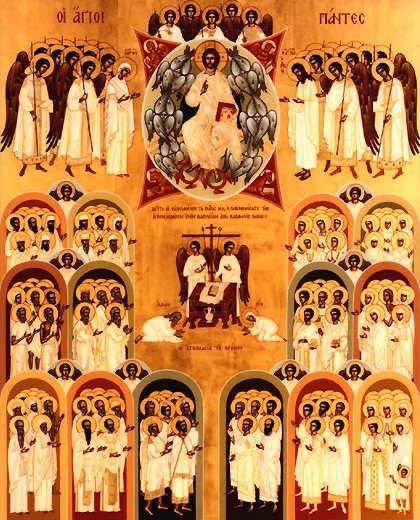
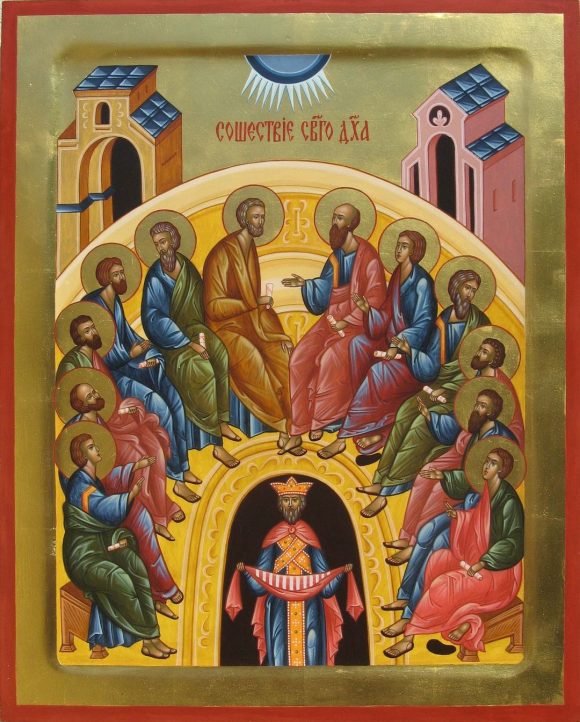
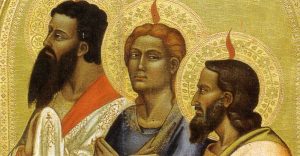 “Christ our God, praised be thee. Whom thou hast made the fishers of all ways and sent down the Holy Spirit. You captured the world through her. Lover of humanity, glory be to thee” (
“Christ our God, praised be thee. Whom thou hast made the fishers of all ways and sent down the Holy Spirit. You captured the world through her. Lover of humanity, glory be to thee” (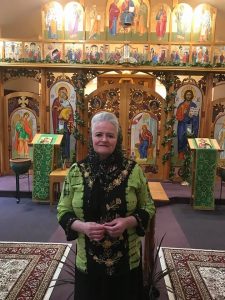 Reminder – Pentecost is this Sunday (new calendar): Byzantines, remember to wear the green. The tradition of wearing green on Pentecost is mostly a Slavic tradition, but it is one that we all can embrace because of green being a symbol of new life in the Holy Trinity.
Reminder – Pentecost is this Sunday (new calendar): Byzantines, remember to wear the green. The tradition of wearing green on Pentecost is mostly a Slavic tradition, but it is one that we all can embrace because of green being a symbol of new life in the Holy Trinity.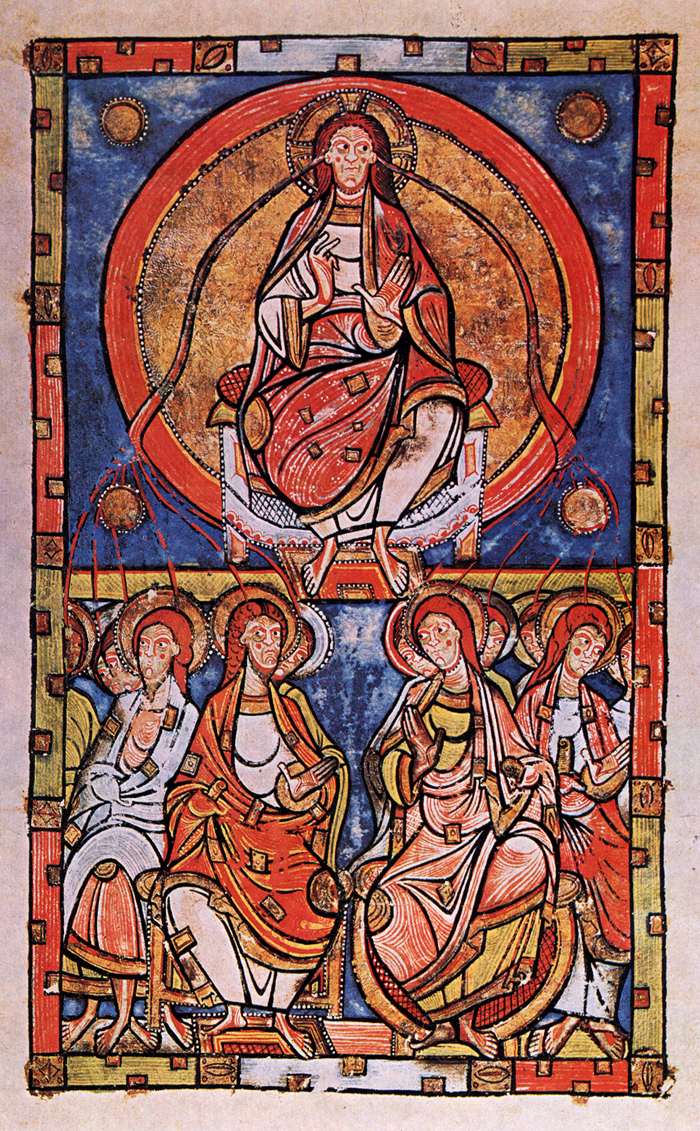 We greet you on the joyous feast of Pentecost, the birth of the Church, and the rebirth of nature. This year, Pentecost coincides with an apparent decline of the pandemic and a loosening of quarantine restrictions. We are enabled to celebrate the birth and renewal of the Church by again attending Divine services —if not today then, by God’s grace, tomorrow. Having conscientiously endured restrictions on interpersonal encounters and interactions we hope to be together in prayer and in the Descent of the Holy Spirit Who comes to us. Our hope is real, and it is being realized. Saying “Happy Birthday” to our Mother-Church, born out of the gift of the Holy Spirit, we are also privileged to observe how life returns to our houses of worship as they refill with people, our chants, incense, and candlelight.
We greet you on the joyous feast of Pentecost, the birth of the Church, and the rebirth of nature. This year, Pentecost coincides with an apparent decline of the pandemic and a loosening of quarantine restrictions. We are enabled to celebrate the birth and renewal of the Church by again attending Divine services —if not today then, by God’s grace, tomorrow. Having conscientiously endured restrictions on interpersonal encounters and interactions we hope to be together in prayer and in the Descent of the Holy Spirit Who comes to us. Our hope is real, and it is being realized. Saying “Happy Birthday” to our Mother-Church, born out of the gift of the Holy Spirit, we are also privileged to observe how life returns to our houses of worship as they refill with people, our chants, incense, and candlelight.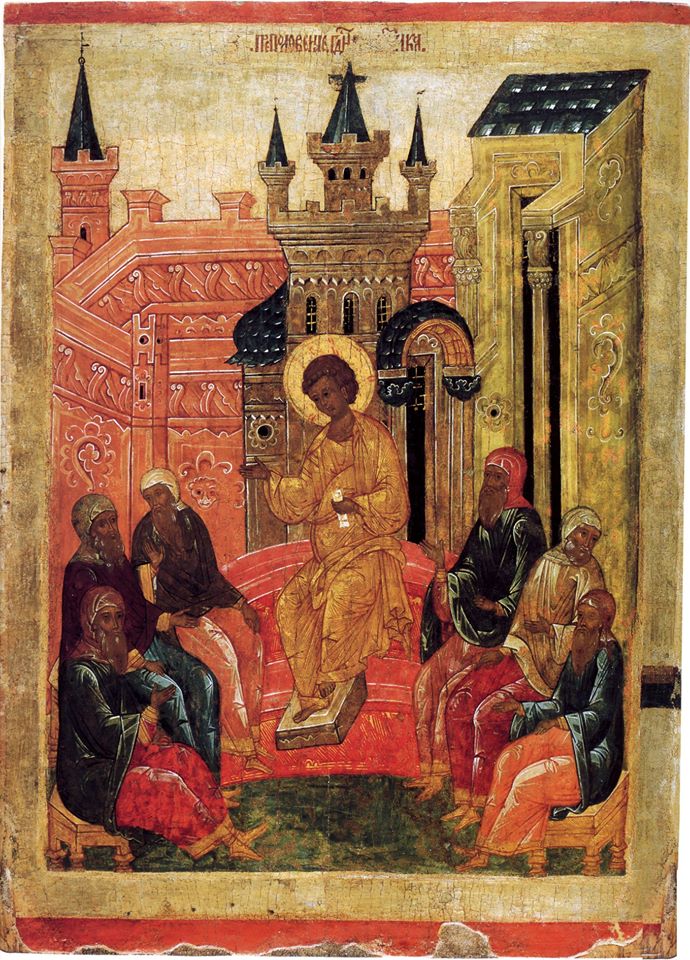 Today, May 6, in the Byzantine Church following the Gregorian calendar, it is the feast of half-Pentecost (half of the Pascal Time). Now is the time to think about what gift of the Holy Spirit you are going to ask for (there are 7).
Today, May 6, in the Byzantine Church following the Gregorian calendar, it is the feast of half-Pentecost (half of the Pascal Time). Now is the time to think about what gift of the Holy Spirit you are going to ask for (there are 7).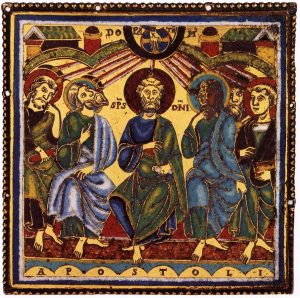 Pentecost is the fiftieth day, “the last and greatest day of the feast.” In the New Testament, this story is told only in the Acts of the Holy Apostles (Acts 2:1-12). On this day, the Holy Spirit came upon the disciples in the form, “as of fire” and they were filled with the Holy Spirit. (Acts 2:3) From this event, some observations can be made:
Pentecost is the fiftieth day, “the last and greatest day of the feast.” In the New Testament, this story is told only in the Acts of the Holy Apostles (Acts 2:1-12). On this day, the Holy Spirit came upon the disciples in the form, “as of fire” and they were filled with the Holy Spirit. (Acts 2:3) From this event, some observations can be made: